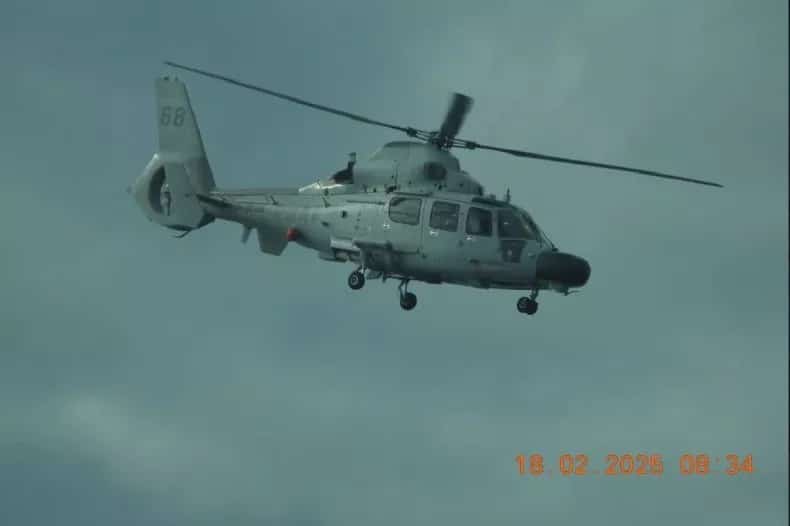A Chinese navy helicopter flew perilously close to a Philippine patrol aircraft on Tuesday, coming within approximately 10 feet (3 meters) of the plane. The incident occurred over the disputed Scarborough Shoal located in the South China Sea, a region claimed by both nations.
The Philippine aircraft, a Cessna Caravan turboprop operated by the Bureau of Fisheries and Aquatic Resources (BFAR), was conducting a routine low-altitude patrol around the shoal when the incident transpired.
Videos uploaded on X showed the Chinese helicopter performing dangerous maneuvers and shadowing the BFAR plane, which was carrying both local and foreign journalists.
Tensions between China and the Philippines continue as the PLA Navy Zhi-9 helicopter approached a Philippine Coast Guard C-208 plane at Scarborough Reef, coming within 3 meters. The Chinese helicopter made maneuvers and directed the Philippine plane away, showing hostility. pic.twitter.com/xh1RU6hjDY
— Geopoliti𝕏 (@DalioTroy) February 18, 2025
The action prompted the Filipino pilot to issue a radio warning: “You are flying too close, you are very dangerous and endangering the lives of our crew and passengers.” The pilot further emphasized that the proximity violated safety standards established by the U.S. Federal Aviation Administration (FAA) and the International Civil Aviation Organization (ICAO).
This tense aerial encounter lasted approximately 30 minutes. Despite the aggressive maneuvering by the Chinese helicopter, the Philippine plane maintained its course and altitude, successfully completing its patrol mission.
In response to the incident, the Philippine Coast Guard and the Bureau of Fisheries issued a joint statement reaffirming their commitment to asserting sovereignty and maritime jurisdiction in the West Philippine Sea—a term used by the Philippines to describe its claimed areas in the South China Sea. The statement condemned China’s aggressive actions, labeling them as escalatory and dangerous.
The Chinese military, referring to the Scarborough Shoal by its Chinese name, Huangyan Island, claimed that the Philippine aircraft had “illegally entered the airspace of China’s Huangyan Island without the Chinese government’s permission.”
Senior Colonel Tian Junli, spokesperson for the Southern Theater Command, stated that naval and air forces were mobilized to track and warn the Philippine plane away.
This incident is the latest in a series of confrontations in the South China Sea, a vital waterway with multiple overlapping territorial claims involving China, the Philippines, Vietnam, Malaysia, Brunei, and Taiwan.
In 2016, a United Nations-backed arbitration tribunal invalidated China’s expansive claims in the South China Sea, a ruling that Beijing has refused to recognize. In response to China’s assertive actions, the Philippines has sought to strengthen security alliances with countries such as the United States, Japan, Australia, France, and Canada.
The U.S., in particular, has reiterated its commitment to defend the Philippines under the Mutual Defense Treaty, stating that any armed attack on Philippine forces, including in the South China Sea, would trigger mutual defense obligations.









